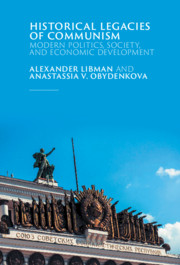This article examines the rise of Russkii Obraz, a Russian ultranationalist organization whose leaders cultivated a neo-fascist ideology and collaborated with skinhead gangs. Despite its extremism, Russkii Obraz played an important role in the Kremlin's “managed nationalism,” a set of measures to manipulate the nationalist sector of the political arena. During 2008–2009, Russkii Obraz collaborated closely with pro-Kremlin youth organizations and enjoyed privileged access to Russia's tightly controlled public sphere. This article argues that the key to Russkii Obraz's brief ascendancy was its duality, its capacity to project moderation in public and extremism in private. For several years, this duality enabled Russkii Obraz to participate in public life while building a support base in the skinhead subculture. But the two projects collided when the security organs exposed Russkii Obraz's links to an ultranationalist death-squad. Nevertheless, official indulgence of Russkii Obraz cannot be attributed merely to ignorance of its violent potential. This indulgence also reflected the fact that it was precisely those at the neo-fascist limits of the political spectrum who were most willing to collaborate in the regime's efforts to suppress demands for democratization.
